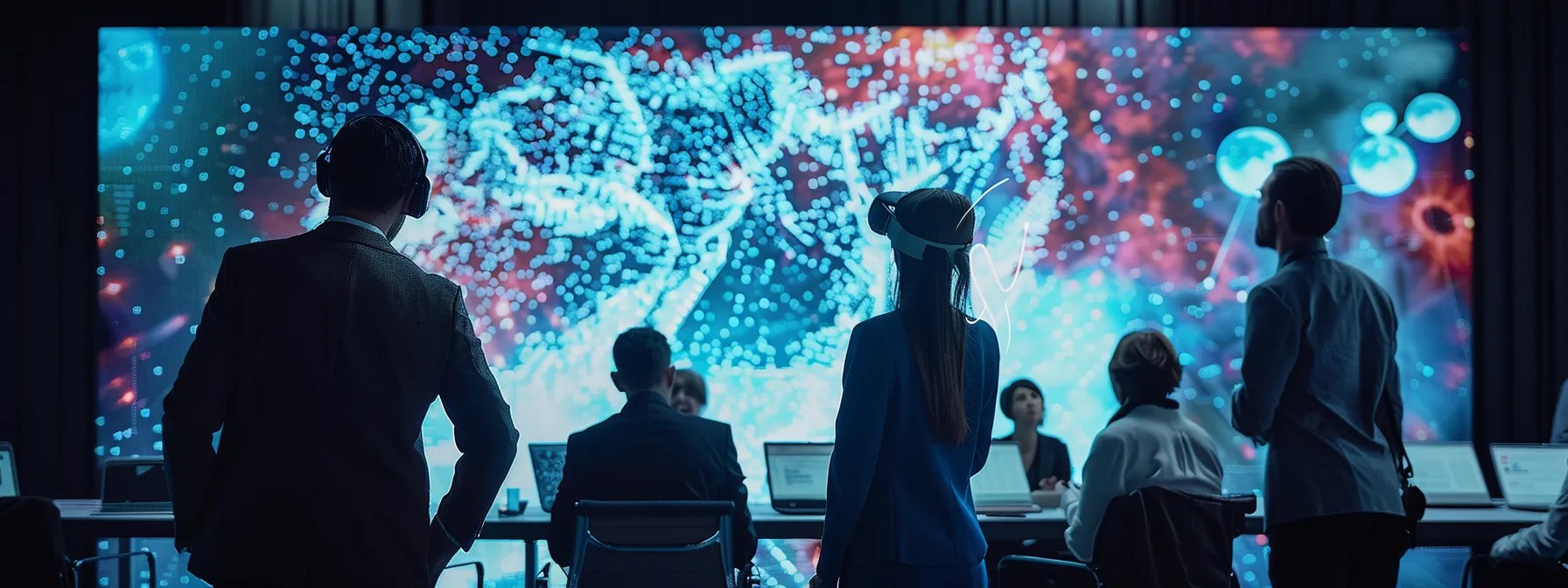Understanding the Effect of Cognitive Biases on Decision Making
Understanding the nuances of cognitive biases is essential for enhancing your decision-making skills. When you engage with the “Thinking Into Results” mindset, you will discover how biases like the false consensus effect can cloud your judgment. Research available on PubMed Central illustrates the significant role emotions play in shaping our choices, often leading us astray. Your ability to recognize and address these biases can empower you in both personal and professional domains. Keep reading to uncover strategies for overcoming cognitive biases and improving the quality of your decisions.
Key Takeaways
- Cognitive biases significantly influence your everyday decision-making and social interactions
- Recognizing biases empowers you to make informed choices aligned with your true intentions
- Debiasing strategies can enhance decision-making and reduce irrational outcomes in personal and professional settings
- Awareness of cognitive biases contributes to clearer thinking in complex decision-making processes
- Understanding cognitive biases fosters better communication and enhances relationships with others
The Impact of Cognitive Biases on Everyday Decisions


Understanding the impact of cognitive biases on your everyday decisions is crucial for improving your decision-making process. Identifying common biases in your daily choices reveals how psychological nuances influence you. The interplay between perception and choice is significant; for example, loss aversion can lead you to avoid risks even when the odds suggest potential benefits. As you navigate your shopping habits, recognize the correlation between marketing tactics and your subconscious responses, as these biases often dictate your purchases. Additionally, these biases extend to your social interactions, subtly shaping how you perceive others and respond in various situations. By acknowledging these factors, you empower yourself to make more informed choices that align with your true intentions. Creative commons principles encourage sharing knowledge, helping you better understand these biases and their far-reaching effects. Thinking Into Results
Identifying Common Biases in Daily Choices
When you examine your daily choices, you may find various biases at play that shape your arguments and influence your preferences. The illusion of control might lead you to overestimate your influence over outcomes, causing you to make decisions that align with this false confidence. As an organism existing within a culture, your decision-making processes are saturated with societal norms and expectations that guide your choices, often without your conscious awareness.
The Interplay Between Perception and Choice
Your behavior is often guided by the illusion of knowing what will make you happy, a concept known as affective forecasting. This simplifies the complex nature of choice, making decision-making feel more intuitive than it truly is. The methodology you adopt in evaluating options is directly influenced by your perceptions, which can lead you away from rational choices, often resulting in outcomes that contradict the theory of optimal decision-making.
How Biases Shape Our Shopping Habits
Your shopping habits are often influenced by cognitive biases, reflecting your prejudices and instincts rather than logic. For instance, the base rate fallacy can lead you to ignore relevant statistics about products, favoring what seems trendy or popular in the moment. By being more patient and deliberate in your choices, you can overcome these biases and make decisions that truly align with your needs and values.
The Effect on Social Interactions
Your social interactions are deeply influenced by cognitive biases, often causing you to misinterpret the actions and intentions of others. Empirical evidence indicates that cognitive processes, as highlighted by Daniel Kahneman, determine how you weigh social cues, leading to assumptions that may not align with reality. This distortion in cognition can affect relationships and communication, creating barriers to understanding.
Consider how these biases manifest in your engagements with people:
By acknowledging how these biases weigh on your social exchanges, you can foster healthier communication and a deeper understanding of those around you.
Cognitive biases extend beyond personal choices; they infiltrate our professional lives, shaping decisions and interactions in the workplace. Understanding their influence can unlock pathways to a more productive and harmonious work environment.
Cognitive Biases in the Workplace


In the workplace, cognitive biases can significantly hinder effective decision-making, particularly in group dynamics and leadership roles. As you engage in team projects, you may notice how the representativeness heuristic drives your interpretations of information, leading to potential misjudgments based on preconceived notions rather than relevant data. This can manifest in how team members interpret information processing, often allowing misinformation to skew perceptions and outcomes. Furthermore, the disposition effect can influence your choices regarding hiring and promotions, where attachments to previous decisions may cloud your judgment about candidates’ competencies. By integrating practices such as cognitive behavioral therapy into your leadership approach, you empower yourself to recognize and mitigate these biases, fostering a more equitable and effective workplace environment.
Decision-Making Biases in Team Projects
In team projects, cognitive biases may serve as an anchor, limiting your ability to evaluate ideas or solutions objectively. This can be particularly detrimental in fields like emergency medicine and accounting, where clear and efficient decision-making is critical. By fostering a culture of open access to diverse perspectives, you enhance learning and encourage more balanced decisions that mitigate the influence of these biases.
The Role of Leadership in Mitigating Bias
Your leadership has a powerful effect on minimizing cognitive biases within your team. By encouraging a culture of open dialogue and critical thinking, you create an environment where evidence-based decision-making prevails over misleading heuristics. Implementing simulation techniques during team discussions can also help dismantle the ‘disease‘ of confirmation bias, enabling you to develop more rational approaches to problem-solving and boost overall team effectiveness.
Hiring and Promotion Biases
In the hiring and promotion process, your attitude toward candidates can be heavily influenced by attribution bias, where you may inaccurately assess an individual’s competence based on irrelevant factors. Research from Cambridge University Press highlights how metacognition plays a critical role in recognizing these biases, ultimately impacting your judgment about potential leaders and team members. By fostering awareness of these biases, you can approach decision-making more objectively, ensuring that skills and qualifications take precedence over subjective perceptions.
Recognizing cognitive biases is the first step towards transforming your decision-making process. By actively addressing these biases, you’ll unlock new pathways for smarter, more effective choices in the workplace.
Overcoming Biases for Better Decision Making


Recognizing the presence of cognitive biases in your decision-making is the first step towards improving your choices. Techniques for identifying personal biases involve sharpening your attention to common patterns like the anchoring effect, which can distort your perception of value or relevance. As you become more aware of these influences, you can implement specific strategies to counteract biased thinking. Encourage creativity in your thought processes and foster a habit of questioning your reasoning regularly. Additionally, integrating debiased decision-making processes promotes more rational outcomes, helping you to mitigate the impacts of hindsight bias and connect with clearer, objective insights. By taking these steps, you empower yourself to make decisions rooted in knowledge rather than preconceived notions.
Techniques for Identifying Personal Biases
To identify your personal biases, start by engaging in reflective practices that challenge your existing viewpoints. For instance, utilizing sampling techniques can help you evaluate your choices against a diverse range of opinions and data, countering the effects of conformity and external pressure. Additionally, balancing your inherent optimism with a critical analysis of past decisions, especially in contexts like internal medicine, can reveal blind spots in your judgment and enhance your decision-making process.
Strategies to Counteract Biased Thinking
To effectively counteract cognitive bias, start by challenging the status quo in your decision-making process. Question your underlying opinions and recognize how optimism bias may skew your perception of the probability of positive outcomes. By adopting a more analytical mindset and weighing all available evidence, you can make more informed and rational choices that minimize the influence of cognitive biases.
Implementing Debiased Decision-Making Processes
Implementing debiased decision-making processes is a vital skill in overcoming the cognitive biases that influence your choices. By recognizing the tendency towards the bandwagon effect, where society pressures you to conform to popular opinions, you can adopt a more critical approach to evaluating options. This shift empowers you to prioritize rational analysis over impulse, ultimately leading to better outcomes.
As you refine your decision-making methodology, consider these strategies to reduce bias:
Biases shape our choices more than we realize, especially when it comes to financial decisions. Understanding how these mental shortcuts influence your money management can lead to smarter, more profitable choices.
Cognitive Biases and Financial Decisions


Cognitive biases significantly influence your financial decisions, often distorting your perceptions and leading to irrational outcomes. Research by experts like Amos Tversky underscores how the human brain can fall prey to cognitive shortcuts, which may create tunnel vision in assessing investment choices. Fear can drive impulsive spending or result in stagnation during saving, affecting your long-term financial stability. By understanding these biases through the lens of behavioral economics, you can implement strategies that promote unbiased financial planning and enhance your overall decision-making process.
How Biases Affect Investment Choices
Understanding how biases can lead to the fallacy of overconfidence is crucial for making sound investment choices. Your motivation to achieve financial growth may cloud your judgment, pushing you to overlook critical thinking when evaluating potential returns. Research from the University of Cambridge highlights the importance of being aware of these biases, allowing you to make more informed investment decisions that align with your long-term financial goals.
The Impact on Saving and Spending Behaviors
Your saving and spending behaviors often reflect cognitive biases that skew your judgment. For instance, you might tend to overspend during economic booms or make impulsive purchases based on fear of missing out (FOMO), impacting your financial health in the long run. Implementing debiasing strategies can act as a valuable resource, helping you make more rational financial choices and avoid falling prey to biases.
This understanding is especially vital in health care decisions, where financial implications can be significant. Balancing immediate wants with long-term financial goals may feel like a jury deliberating on the best course of action, underscoring the need for mindful decision-making.
Strategies for Unbiased Financial Planning
To achieve unbiased financial planning, start integrating insights from cognitive science that address common pitfalls. Recognize how the availability heuristic may lead you to focus on readily available information, distorting your valuation of investments. Combat this by diversifying your research sources and seeking out less obvious data to support decisions, allowing you to pave the way for greater sustainability in your financial strategies.
Additionally, be mindful of the endowment effect, which is the tendency to overvalue what you already own. This bias can cloud your judgment and lead to irrational attachment to underperforming assets. By practicing a more analytical approach that encourages objective evaluations, you can make choices that genuinely align with your long-term financial objectives.
Lastly, addressing cognitive dissonance is vital in your financial endeavors. This psychological discomfort often arises when you hold conflicting beliefs about spending, saving, or investing. Cultivating awareness of this phenomenon will help you align your actions with your true financial goals, ensuring that emotional biases do not dictate your planning choices.
Understanding how these biases impact our financial choices opens the door to transformative insights. Next, let’s uncover the science behind these patterns and the powerful effects they have on our decision-making processes.
The Science Behind Cognitive Biases


Understanding the brain’s role in cognitive bias is foundational to grasping how these mental shortcuts affect your decision-making. These biases are more than mere quirks; they have an evolutionary purpose, designed to enhance survival by allowing rapid assessments of complex situations. Recent studies reveal that specific biases, such as framing effects, can significantly skew your interpretation of statistics, influencing your responses to various scenarios. Additionally, insights from therapy and behavioral economics highlight how your perceptions of brand messaging can manipulate your choices, further reinforcing the importance of recognizing these psychological phenomena in everyday life.
Understanding the Brain’s Role in Bias
As you explore the brain’s role in cognitive bias, it’s essential to recognize how these biases can lead to the misinformation effect. This occurs when your memory becomes distorted due to authoritative statements, influencing your beliefs and decisions, particularly in critical environments like an emergency department. The interplay of cognitive shortcuts, such as the hot hand fallacy, illustrates your tendency to misjudge patterns and outcomes, while fostering empathy can guide you to a more nuanced understanding of others’ perspectives, ultimately leading to more rational decision-making.
The Evolutionary Purpose of Biases
Cognitive biases have an evolutionary purpose that stems from our ancestors’ need to navigate uncertainty and assess risk effectively. By developing biases such as status quo bias, our brains prioritize familiar choices, allowing quick decision-making in potentially dangerous situations. A literature review on cognitive bias modification reveals how these mental shortcuts have historically enhanced survival, proving that while beneficial, they can lead to irrational decisions in modern contexts.
Recent Studies and Findings
Recent studies have illustrated how cognitive biases impact not only individual decisions but also broader societal issues such as taxation and healthcare. Research shows that pain perception can distort your understanding of causality in fiscal policies, leading to resistance against necessary taxes. Increased awareness of these biases promotes clearer thinking amid the complexity of modern decision-making.
- Studies demonstrate the link between cognitive biases and decision-making.
- Tax policies are affected by individuals’ perceptions of pain and causality.
- Greater awareness of biases can assist in navigating complex decisions.
Armed with insights into how cognitive biases influence our decision-making, you can now turn your knowledge into action. Let’s explore effective techniques to share this crucial understanding with others and inspire change.
Techniques to Educate Others About Cognitive Biases


Building awareness about cognitive biases among your peers enhances mental health and nurtures a culture of informed decision-making. Utilizing effective communication strategies enables you to share insights in a manner that resonates with others, ensuring that the concepts of bias become accessible. Implement specific tools and resources designed for teaching, transforming complex theories into manageable lessons. Supplement your discussions with case studies and real-world examples that illustrate how bias can affect various outcomes, reinforcing the idea that understanding these influences is an invaluable asset. By demonstrating the pitfalls of peer pressure and the reliance on hypothesis-driven thinking, you can instill confidence in your audience, empowering them to recognize and address biases in their own lives.
Effective Communication Strategies
To effectively educate others about cognitive biases, focus on fostering a sense of consciousness regarding their own beliefs and perceptions. By providing insight into common biases, such as the bias blind spot, you can help your audience recognize the ambiguity in their thought processes and decision-making. Encouraging discussions that reveal personal experiences with biases can create a more engaging learning environment and promote critical thinking among peers.
Tools and Resources for Teaching About Biases
To effectively convey the complexities of cognitive biases, utilize interactive tools that engage participants in exercises demonstrating how perception shapes their understanding of reality. Incorporating visual aids and real-world examples can illustrate concepts like the base rate fallacy, highlighting the importance of statistical context in decision-making. Additionally, leveraging dual process theory can guide others in recognizing how both intuitive and analytical thinking influence memory, reinforcing the need for mindfulness in evaluating choices.
Case Studies and Real-World Examples
Utilizing case studies and real-world examples can significantly enhance your understanding of cognitive biases, particularly when examining outcomes related to decision-making processes. For instance, a company might experience poor performance due to outcome bias, where judgment is swayed by the results of previous decisions rather than the quality of the process itself. This scenario highlights the need to foster a mindset that considers ethical aspects and prevents groupthink from clouding individual evaluation.



